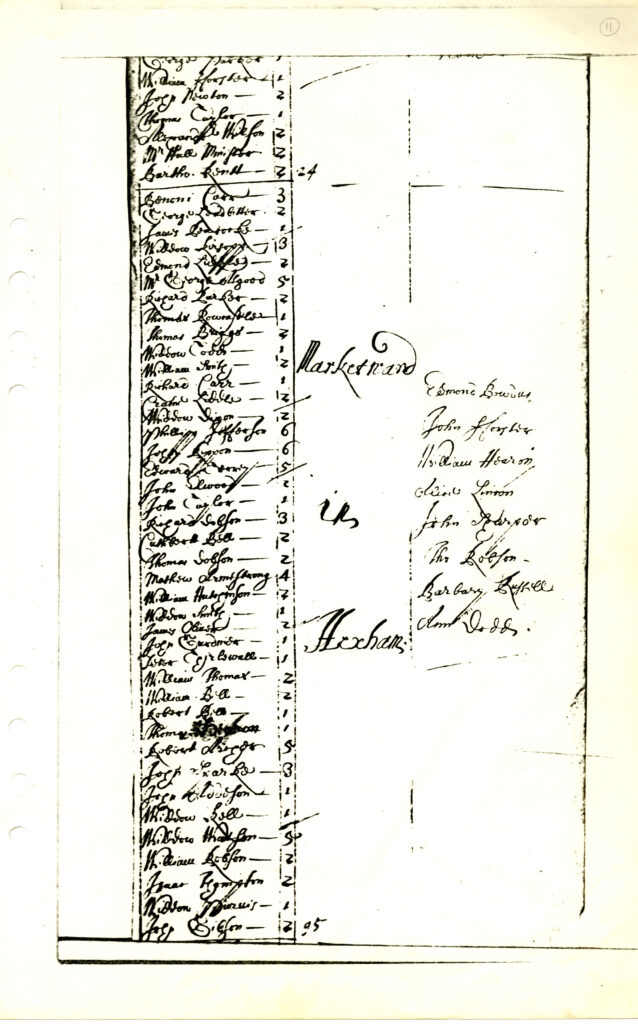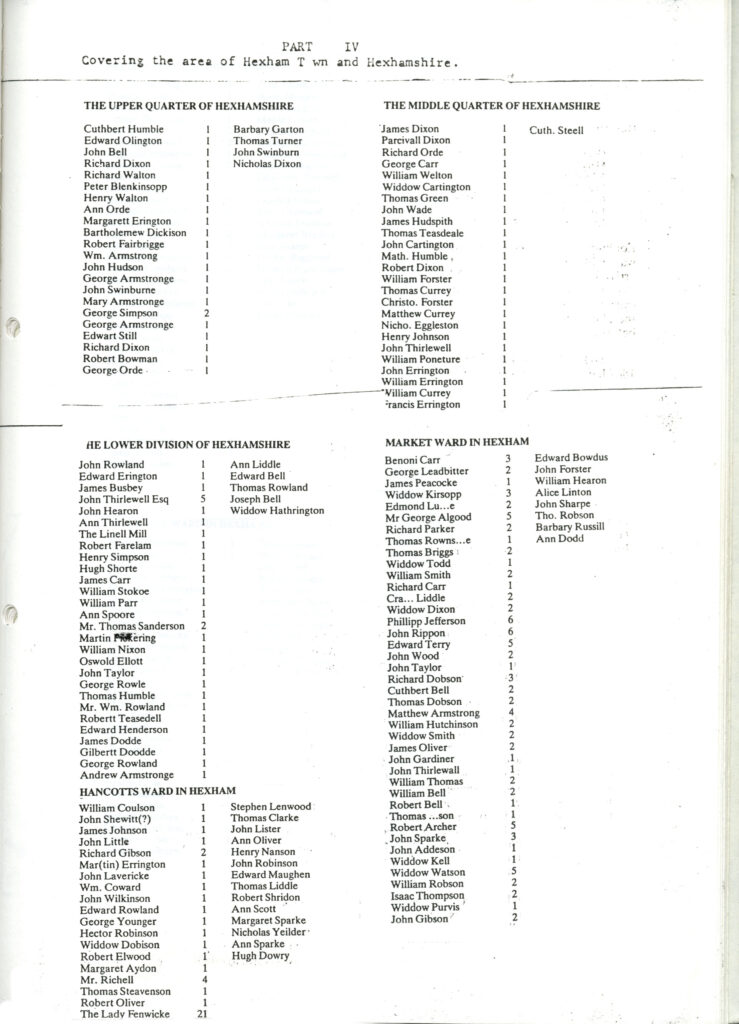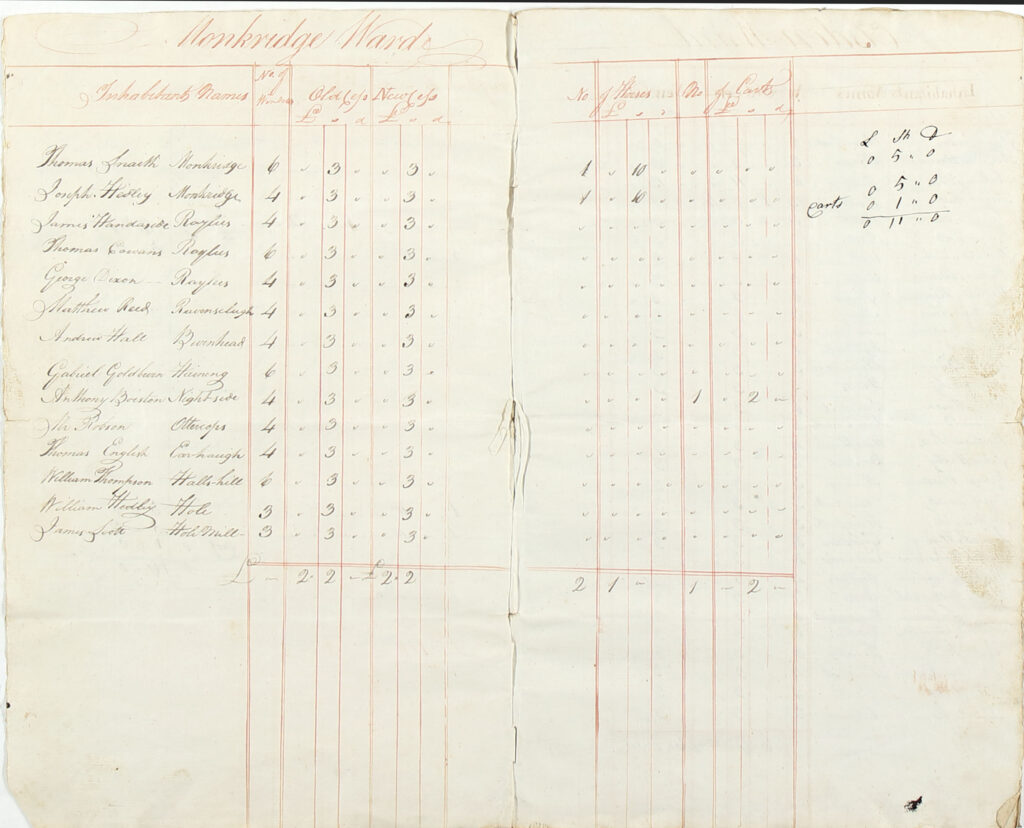TAXATION RECORDS
Local taxation records, particularly those pre-dating census records, can be helpful in discovering further information about a property. The main forms of taxation records that you might look for are those relating to Hearth Tax, Land Tax and Window Tax.
E179 Database
A useful starting point is the E179 database located on The National Archives website – The National Archives | E179 | Home page. The database lists taxation records (but not the contents of these records) that are to be found within Class E179 (Exchequer records relating to lay and clerical taxation) at The National Archives. It is possible to search on a place name to discover what records exist for the town or village that you are researching.
This screenshot is a list of the records that exist for the town of Hexham, Northumberland.
You can discover further information about the record by clicking on the Details button to the right of each entry. Northumberland Archives holds a photocopy and transcription of the 1664 Hearth Tax Returns. Otherwise, the records listed in the database are all retained by The National Archives – The National Archives.
Hearth Tax
These records date within the period c.1660-1690. The tax on hearths was levied twice yearly at Lady Day & Michaelmas between 1662-1688. Each hearth was taxed at a rate of 2/- per hearth, payable in two instalments. Exempted from payment were those receiving poor relief, had premises worth less than 20 shillings (£1) per year or who possessed property worth less that £10. The returns are generally marked to indicate that a household is exempted from payment because of poverty. Returns are usually arranged by township.
The original returns are held by The National Archives but often photocopies or transcripts are held by local Archives. Generally specific property addresses are not given – the returns will return the parish or ward within which a property was located. However, they can still be useful. If you know that name of the person living in the property at that time it is interesting to note the number of hearths – an indication of the status of the property. Northumberland Archives holds a photocopy and transcript of the returns for 1664.
Some Hearth Tax returns are available online at http://gams.uni-graz.at/context:htx. This project does not currently include any Northumberland records.
Land Tax Returns
Land Tax returns are another potentially useful source. Land tax was first payable in 1693. From 1698 it was administered on a county by county basis and copies of the returns are to found amongst the Quarter Sessions records in local Archives. Many of the early returns have not survived. Those for Northumberland commence in the mid-18th century. The earlier returns list landowners only but as tax was payable on even small land holdings you do find reference to relatively humble persons with small landholdings. Later returns (from 1772) also list occupiers (tenants or sub-tenants). How the property was owned, i.e. whether copyhold or freehold etc., is not stated. Nevertheless these records can be a useful source particularly post 1771. Also noted is the name of the property on which tax was payable and the amount of tax payable. Returns might therefore be used to establish details of ownership/tenancy of a property over a long period. Between 1693 & 1831 Roman Catholics paid double tax.
Window Tax
Window Tax was introduced in 1697 after the abolition of the Hearth Tax. It was not abolished until 1851. The occupant of a house was charged at an annual rate of 2/-, with additional payments being necessary for houses with over 8 windows. In 1709 the rates for larger houses were increased. From the mid-18th century the rates for those with larger properties were increased at regular intervals. From 1825 those with fewer than 8 windows were exempt. Individual properties are often referred to in the returns and again the number of windows gives an indication of the status of a house. Returns also provide details about ownership/occupancy of a property.
Survival of returns is patchy. Where they do survive they should be held in local Archives. Very few returns survive for Northumberland with none surviving for the Hexham area.






